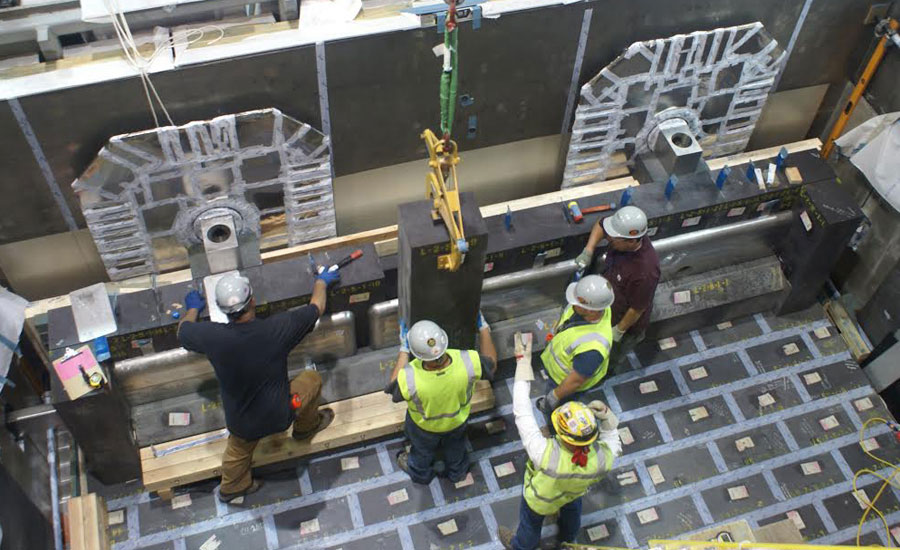The completion of the first of two 300-ton nuclear waste melters at Hanford’s Vit Plant has contractor Bechtel National Inc. looking forward to continued progress on what is arguably the nation’s most complex construction project.
Located at the Dept. of Energy’s Hanford Nuclear Waste Site in southeast Washington, Bechtel is currently in the process of designing and building a Waste Treatment and Immobilization Plant, known as a Vit Plant because it will eventually turn liquefied radioactive waste into vitrified glass for long-term safe storage.
The Dept. of Energy’s Office of River Protection and Bechtel announced the completion of the first 300-ton nuclear waste melter located inside the WTP’s Low-Activity Waste Facility.
“The melters are the heart of the WTP low-activity vitrification process and completing the assembly marks another step toward completing construction and shifting to commissioning,” says Bill Hamel, WTP federal project director for the Office of River Protection, in a statement. “The melters are large complex pieces of equipment critical to WTP’s success.”
Construction crews have turned the focus onto the safe assembly of the second LAW melter.
Peggy McCullough, Bechtel’s project director for the WTP project, says in a statement that the melter’s final assembly serves as a key step toward construction completion. “For our employees, this achievement represents a substantial, detailed design, fabrication and assembly effort for the largest nuclear waste melter ever built in the U.S.”
The melters will heat Hanford’s low-activity tank waste and glass-forming materials to 2,100 degrees Fahrenheit, the vitrification process, before the mixture is poured into stainless steel containers for permanent storage. During plant operations, the two LAW facility melters will produce 30 tons of glass daily, 10 times the capacity of the melter in operation at the DOE’s Savannah River Site’s Defense Waste Processing Facility in South Carolina.
Bechtel holds the prime contract to design, construct, start up and commission the Vit Plant, which includes the LAW facility, an analytical laboratory, the High-Level Waste Facility and the Pretreatment Facility, along with a collection of more than 20 support facilities.
DOE plans to treat low-activity tank waste as soon as 2022, ahead of the full WTP commissioning.
Follow Tim Newcomb on Twitter at @tdnewcomb.


Post a comment to this article
Report Abusive Comment